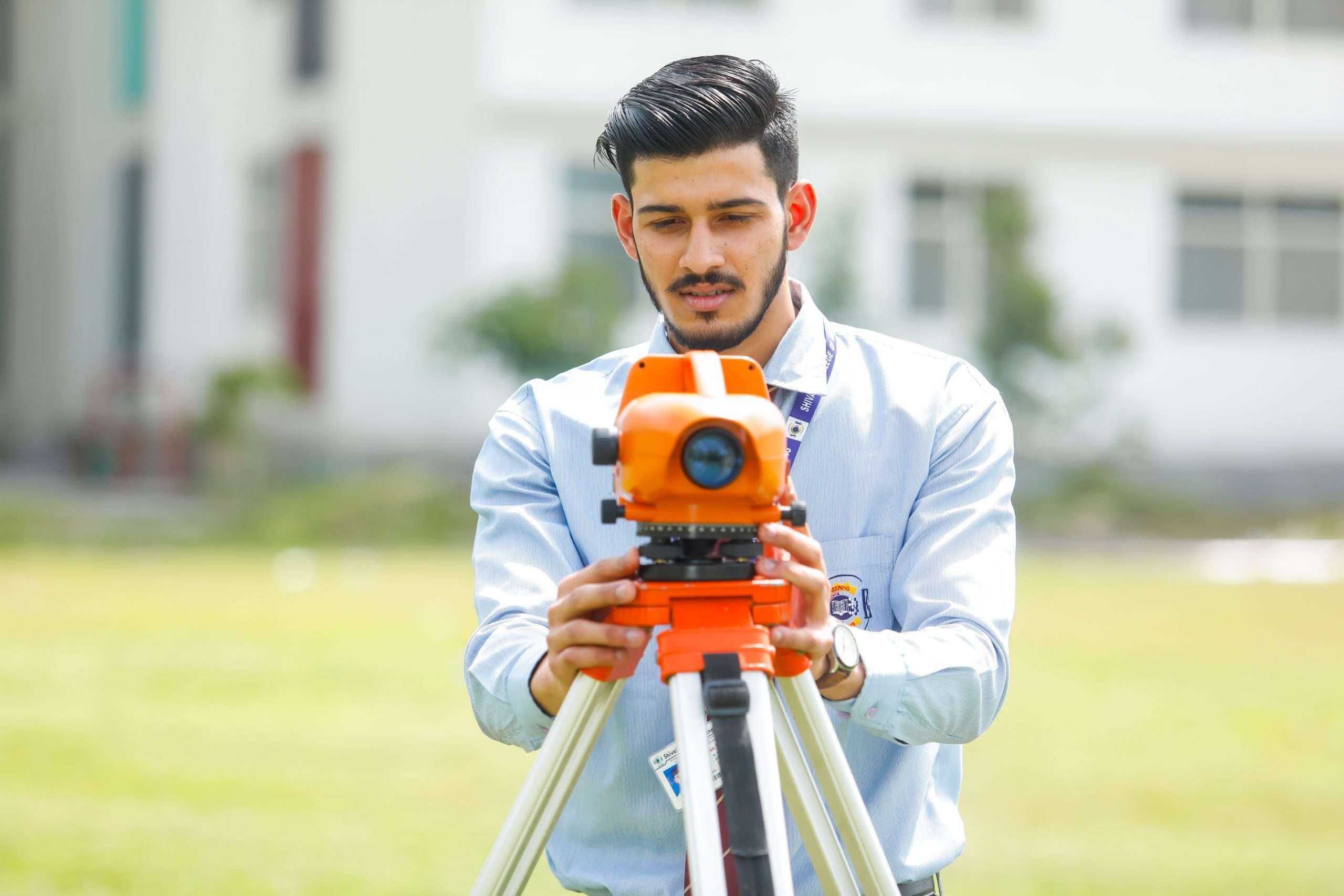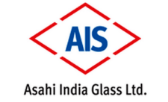Menu
Duration 4 Years and 3 Years for Lateral Entry
Eligibility Criteria 10+2 with minimum 60% Marks in Physics, Mathematics along with Chemistry/ Biotechnology/ Computer Science as one of the subjects. For Lateral entry: a. Passed Diploma examination with at least 50% marks in ANY branch of Engineering and Technology b: Passed B.Sc. Degree from a recognized University as defined by UGC, with at least 50% marks and passed 10+2 examination with Mathematics as a subject c: Provided that the students belonging to B.Sc. Stream, shall clear the subjects Engineering Graphics/ Engineering Drawing and Engineering Mechanics of the First Year Engineering Programme along with the Second-year subjects d: Provided that the students belonging to B.Sc. Stream shall be considered only after filling the supernumerary seats in this category with students belonging to the Diploma stream e: Passed D. Voc. Stream in the same or allied sector f: In the above cases, a suitable bridge Courses, if required such as in Mathematics may be conducted.

Why take this Course?
Why choose Us?
Progressions & Career
Here are the opportunities after pursuing B.Tech ( Hons ) Civil Engineering:
Progression:
The main specializations offered under M.Tech in Civil Engineering are:
Career:
Below are the leading career roles candidates can choose after completing B.Tech Civil Engineering:
The Shivalik Advantage
Certain unique qualities of the Shivalik College set them apart from the rest of the colleges. They make the institute the
Best B.Tech Civil Engineering College :
Top Recruiters






Fee Structure 2025
FAQ's
For B Tech ( Hons ) Civil Engineering Admission 2024 in Shivalik College, you can fill up the ‘Enquire Now’ form by filling in details like name, email address, mobile number, state city, course, and specialization. You can enquire
You can visit the official website of Shivalik College for more details:
https://www.shivalikcollege.edu.in/academics/engineering/btech-civil-engineering
Visit the below link for a clear idea of the Btech ( Hons ) Civil Engineering Fees of this institute:
Contact numbers are 6303 174 022 | 7055 613 063
Shivalik College is one of the Best B Tech ( Hons ) Civil Engineering College in Dehradun. The institute pride itself on being the most active and well-known one when it comes to encouraging students to find the job of their dreams. This institute is constantly ranked among the topmost colleges of India.
The Civil Engineering program at this institute emphasizes building the student’s proficiency in core subjects:
Civil Engineering graduates can get good jobs not just in the private sector, but the public sector as well. For freshers, it is possible to be employed as junior engineers or trainees. They can appear in the UPSC exam for getting government jobs.
To get a decent job after B.Tech Civil is advisable for students to keep their resume up-to-date. Students are advised to maintain a decent score in their subjects. Also, they need to be well aware of what they aspire to do in their final year project and internship.
Civil Engineering course introduces students to a curriculum that focuses on design, planning, and construction of buildings and roads. Typically, the syllabus includes Computer-Aided Analysis and Engineering Graphics and Design.
Civil Engineering is a decent career choice because it will be beneficial for you to build a structure with your name which lasts forever. Being a civil engineer, you can obtain a decent job in the private or Government sectors. Graduates of Civil engineering can start their consultancy firm as self-employed professionals.

Mr. Bhuvan Chandra Bhatt is the Head of the Civil Engineering Department at Shivalik College of Engineering, Dehradun. With expertise in Soil Mechanics, Foundation Engineering, and Water Resource Engineering, he has a strong teaching and research background.
He has published over five research papers in reputed journals, holds more than four patents, and has served as a reviewer for prestigious publications. Known for his commitment to academic excellence, he fosters a culture of inquiry and innovation, encouraging students to bridge the gap between theory and practice.
Under his leadership, the department emphasizes sustainable practices, modern infrastructure, and industry-relevant curricula, preparing students for real-world challenges. His vision includes strengthening industry-academia collaborations, advancing research, and inspiring future engineers to make meaningful contributions to society.
Contact Info
Curriculum
| BAST 101 BASP 101 | Engineering Chemistry |
| BAST 102 | Mathematics-I |
| BAST 103 BASP 103 | English for Communication |
| BEET 101 BEEP 101 | Fundamentals of Computers & Programming in C |
| BMEP 101 | Manufacturing Practices / Workshop |
| BASP 102 | Internship-I (60 Hrs Duration) at the Institute level |
| BAST 104 BASP 104 | Engineering Physics |
| BAST 105 | Mathematics-II |
| BMET 102BMEP 102 | Basic Mechanical Engineering |
| BCET 101 BCEP 101 | Basic Civil Engineering & Mechanics |
| BMEP 103 | Engineering Graphics |
| BASP 106 | Language Lab & Seminars |
| BEST 101 | Environmental Studies |
| BAST-301 | MATHEMATICS-III |
| BCET-302 | CONSTRUCTION MATERIALS |
| BCET303 | SURVEYING |
| BCET-304 | BUILDING PLANNING & ARCHITECTURE |
| BCET-305 | STRENGTH OF MATERIAL |
| BCEP-306 | STUDY OF HISTORICAL & ANCIENT CIVIL ENGG. PRACTICES |
| BCET-401 | ENERGY & ENVIROMENTAL ENGINEERING |
| BCET-402 | CONCRETE TECHNOLOGY |
| BCET-403 | STRUCTURAL ANALYSIS-I |
| BCET-404 | TRANSPORTATION ENGINEERING-I |
| BCET-405 | ENGINEERING GEOLOGY & REMOTE SENSING |
| BCEP 406 | SOFTWARE LAB |
| BCET 501 | DESIGN OF RC ELEMENT |
| BCET 502 | GEOTECHNICAL ENGINEERING |
| BCET 503 | FLUID MECHANIC |
| BCET 504(A) | STRUCTURAL ANALYSIS-II |
| BCET 505(B) | TRANSPORTATIONAL ENGINEERING-II |
| MATERIAL TESTING LAB |
| BCET 601 | DSIGN OF RC STRUCTURE |
| BCET 602 | ENVIRONMENTAL ENGINEERING-I |
| BCET 603 | OPEN CHANNEL FLOW |
| BCET 604(A) | GEOTECHNICAL ENGINEERING-II |
| BOEC605(B) | ENVIRONMENTAL MANAGEMENT AND SUSTAINABLE DEVLOPMENT |
| BCEP606 | ADVANCED SURVEYING LAB |
| BCEP607 | MINOR PROJECT - I |
| TCE 701 | BRIDGE ENGINEERING |
| TCE 702 | TRANSPORTATIONAL ENGINEERING-II |
| TCE 703 | SEISMOLOGY AND EARTHQUAKE |
| TCE 704 | HYDRAULIC STRUCTURE |
| TCE 705 | AIR AND WATER POLUTION |
| PCE 752 | CAD LAB - I |
| TCE 801 | HYDROPOWER ENGINEERING |
| TCE 804 | CONSTRUCTION PLANNING & MANAGEMENT |
| TCE 806 | ADVANCE HIGHWAY ENGINEERING |
| TCE 808 | ENVIROMENTAL MANAGEMENT & SUSTAINABLE DEVELOPMENT |
| PCE 852 | CAD LAB-II |
B.Tech Civil Syllabus
Program Specific Outcomes and Program Educational Objectives
Engineering knowledge: Apply the knowledge of mathematics, science, engineering fundamentals, and anengineering specialization to the solution of complex engineering problems
Problem analysis: Identify, formulate, review research literature, and analyze complex engineering problems reaching substantiated conclusions using first principles of mathematics, natural sciences, andengineering sciences
Design/development of solutions: Design solutions for complex engineering problems and design system components or processes that meet the specified needs with appropriate consideration for the public health and safety, and the cultural, societal, and environmental considerations.
Conduct investigations of complex problems: Use research-based knowledge and research methods including design of experiments, analysis and interpretation of data, and synthesis of the information toprovide valid conclusions
Modern tool usage: Create, select, and apply appropriate techniques, resources, and modern engineering and IT tools including prediction and modeling to complex engineering activities with an understanding ofthe limitations
The engineer and society: Apply reasoning informed by the contextual knowledge to assess societal, health, safety, legal and cultural issues and the consequent responsibilities relevant to the professionalengineering practice
Environment and sustainability: Understand the impact of the professional engineering solutions insocietal and environmental contexts, and demonstrate the knowledge of, and need for sustainable development
Ethics: Apply ethical principles and commit to professional ethics and responsibilities and norms of theengineering practice
Individual and team work: Function effectively as an individual, and as a member or leader in diverseteams, and in multidisciplinary settings
Communication: Communicate effectively on complex engineering activities with the engineering community and with society at large, such as, being able to comprehend and write effective reports and design documentation, make effective presentations, and give and receive clear instructions.
Project management and finance: Demonstrate knowledge and understanding of the engineering and management principles and apply these to one‘s own work, as a member and leader in a team, to manageprojects and in multidisciplinary environments
Life-long learning: Recognize the need for, and have the preparation and ability to engage in independent and life-long learning in the broadest context of technological change.
Students will be able to plan and design building, roads, bridges and hydraulic structures.
Students will be able to apply modern construction techniques and management tools to execute civil engineering projects.
To provide graduates with sound fundamental knowledge to design solutions for complex civil engineering problems.
To bring out an effective teaching learning process,through which the students will contribute to the development of sustainable infrastructure.
To provide an excellenmt academic environment for the students with asrong etical attitude and societal responsibilities.
To prepare graduates to learn to harness the evolving technologies as part of an organisation or as entrepreneurs.
Facilities
SHIVALIK COLLEGE OF ENGINEERING
| CO Sl.
No |
COURSE OUTCOMES | Mapping of course outcome with PO and PSO | |
| PROGRAM – Civil Engineering | |||
| BAST 301 Mathematics-II | |||
| BAST 301 | CO1- Solve first order differential equations utilizing the standard techniques for separable, exact, linear, homogeneous, Bernoulli cases.
CO2- Solve basic application problems described by second order linear differential equations with constant and variable coefficients. CO3- Demonstrate their understanding of how physical phenomena are modeled using special functions CO4- Apply partial derivative equation techniques to predict the behavior of certain phenomena. CO5- Understand purpose and functions of infinite series and Fourier series. CO6- Evaluate integrals along a path in the complex plane and understand the statement of Cauchy’s theorems. |
PO5,PO6,PO6,PO7,PO8,PO9,PO9,PO10, PO12 | |
| BCET 302 CONSTRUCITON MATERIAL | |||
|
BCET 302 |
CO1 Understand the manufacturing process of Rocks, bricks and their various properties.
CO2 Understand chemistry, properties, characteristics and classification of cement, aggregate and lime. CO3 Understand the constituent materials for properties of fresh and hardened concrete properties and their tests. CO4 Understand the composition of steel, aluminum and their composites and application in construction field and treatments for increasing their durability. CO5 Select the different forms of timber and composite panels for market requirement and mechanical treatments for increasing their durability. CO6 Describe various latest and modern construction materials, properties and their application |
PO1,PO6,PO7,PO8,PO9,PO11 PO12,PSO1,PSO2 | |
| BCET 303 SURVEYING | |||
| BCET 303 | CO1 Understand linear measurement, angular measurement, leveling, triangulation, trilateration and plane table surveying.
CO2 Understand the modern field surveying instrument with their working principle. CO3 Calculate the linear measurement, angular measurement, traversing, leveling, area and volume of field, coordinate of points and make the topography map of a particular area CO4 Understand the component of curve and apply the setting out of curve on field. CO5 Understand the phenomena of error in surveying and calculate adjustment and correction of the surveying errors CO6 Understand the Astronomical survey and calculate the space coordinate. |
PO1, PO2, PO3, PO4, PO5, PO6, PO6, PO7, PO8, PO9, PO9, PO10, P011, PO12, PSO1,PSO2 | |
| BCET 304 BUILDING PLANNING & ARCHITECTURE | |||
|
BCET 304 |
CO1 Understand the drawing of various building components
CO2 Understand building Bye laws and codes followed at the time of planning of building and terminologies use in building planning CO3 Understanding of building planning, drawing, building services and their engineering aspects in residential and institutional building and apply them as per need of building CO4 Able to understand the principles of architecture and architecture composition. CO5 Able to understand the fundamentals of Town planning CO6 Able to understand various components forming one- and two-way perspective drawing and adapts them to draw basic shapes |
PO1,PO3PO5,PO6,PO7,PO10,PO11, PO12 PSO1,PSO2 | |
| BCET 305 STRENGTH OF MATERIAL | |||
|
BCET 305 |
CO1 Understand different forces and their effect on beams and shafts.
CO2 Understand various stress combination on rigid and deformable solid materials CO3 Determine the shear force and bending moment in beams for different support conditions CO4 Apply the theory of simple bending on various sections CO5 Determine the slopes and deflections of beams CO6 Calculate the stress developed on thin cylinders and Spheres under internal and external pressure. |
PO1,PO2,PO3,PO4,PO5,PO6, PO7,PO8,PO9,PO10,PO11, PO12,PSO1 | |
| BCET 401 ENERGY AND ENVIRONMENTAL ENGINEERING | |||
|
BCET 401 |
CO1 Describe advanced level knowledge, techniques, skills and modern tools in the field of Energy and Environmental Engineering.
CO2 Distinguish the different energy generation systems and their environmental impacts. CO3 To identify environmental problems and solutions through organized research. CO4 To acquire analytical skills in assessing environmental impacts through a multidisciplinary approach. CO5 Respond to global policy initiatives and meet the emerging challenges with sustainable technological solutions in the field of energy and environment. CO6 To improve the communication and writing skill so as to face the competitive world. |
PO1,PO2,PO3,PO4,PO5,PO6,PO7,PO8,PO9,PO10,PO11, PO12, PSO1, PSO2 | |
| BCET 402 CONCRETE TECHNOLOGY | |||
|
BCET 402 |
CO1 Identify Quality Control tests on concrete making materials
CO2 Understand the behavior of fresh and hardened concrete CO3 Design concrete mixes as per IS and ACI codes CO4 Understand the durability requirements of concrete CO5 Understand the need for special concretes |
PO1,PO2,PO3,PO4,PO6,PO7,PO8,PO12 PSO1,PSO2 |
|
| BCET403 STRUCTURAL ANALYSIS 1 | |||
| BCET403 | CO1 Understand the basic concept of static and kinematic indeterminacy of determinate and indeterminate beams for analysis of structures
CO2 Apply equations of equilibrium to truss structures and compute the reactions and member forces. CO3 Evaluate and draw the influence lines for reactions, shears, and bending moments in beams and girders due to moving loads. CO4 Calculate the internal forces in cable structures. CO5Calculate the internal forces in arch type structures. |
PO1,PO2,PO3 PSO1,PSO2 |
|
| BCET 404 TRANSPORTATION ENGG I | |||
|
BCET 404 |
CO1 Basic concept about Highway Engineering
CO2 To understand the principles of Highway geometrics design as per IRC standards and Traffic engineering. CO3 To understand Types of pavements & Materials required for highway construction CO4 To understand Construction procedure for different type of pavements. CO5 To understand maintenance procedure for different type of pavements. CO6 Design rigid and flexible pavements which comply with IRC: 37 standards, and factor influencing their maintenance. |
PO1,PO2,PO3,PO4 PSO1 |
|
| BCET405 ENGINEERING GEOLOGY AND REMOTE SENSING | |||
|
BCET405 |
CO1 RECALL the names of important minerals and their composition and UNDERSTAND the significance of geology in the domain of civil engineering, and the physical properties of minerals, the internal structure of the earth, and the different types of rocks.
CO2 CLASSIFY minerals based on their physical properties and CLASSIFY rocks based on origination and engineering properties CO3 UNDERSTAND the process of weathering of rocks and RECALL the factors affecting weathering, also EXPLAIN the different types of deposits CO4 UNDERSTAND folds faults and their classification, and the consequences of geological failures CO5 UNDERSTAND the principles of remote sensing and photogrammetry and ANALYZE digital images CO6 UNDERSTAND basic concepts of GIS and ANALYZE vector and raster data |
PO1,PO2,PO3, PO4,PO5, PO6,PO7,PO8,PO9,PO10,PO11, PO12, PSO1,PSO2 |
|
| BCET 501 DRCE | |||
| BCET 501 | CO1 Understand the mechanical properties of steel and concrete.
CO2 Understand and apply the design codes related to the design of reinforced concrete members. CO3 Analyze and design reinforced concrete flexural member. CO4 Analyze and design for shear and development length in reinforced concrete members. CO5 Analyze and design reinforced concrete compression member. CO6 Analyze and design for Staircase and Retaining walls. |
PO1,PO2,PO3,PO4,PO5,PO6,PO7,PO8,PO9,PO12 PSO1,PSO2 |
|
| BCET 502 GEOTECHNICAL ENGINEERING I | |||
| BCET 502 | C01 Understand the origin of soil and to able identify different types of soil
CO2 Able to calculate the index and engineering properties of different types of soil CO3 Understand the influence of water flow on the engineering behavior of soils. CO4 Apply the concept of effective stress and understands stress distribution within a soil mass CO5 Able to apply the concept of compressibility for determining the settlement in soil CO6 Identify shear strength parameters for field conditions and able to classify soil slopes and interpret the FOS for different types of soil. |
PO1,PO2,PO3,PO4,PO5,PO6,PO7,PO10,PO12 PSO1,PSO2 |
|
| BCET 503 FLUID MECHANICS | |||
| BCET 503 | CO1 Identify and obtain the values of fluid properties and relationship between them.
CO2 Examine the pressure variation, pressure measurement and also determine the pressure on submerged and flowing bodies. CO3 Understand the principles of continuity, momentum, and energy as applied to fluid motions and analyze the fluid flow problems with the application of the mass, momentum and energy equations. CO4 Apply dimensional analysis to predict physical parameters that influence the flow in fluid mechanics. CO5 Identify energy losses in pipe transitions and sketch energy gradient lines. CO6 Understand viscous and no viscous flow over bodies, boundary layer calculation of lift and drag forces. |
PO1, PO2, PO3, PO4, PO5, PO6, PO7, PO8, PO9, PO10, PO11, PO12, PSO1, PSO2 |
|
| BCET 504A STRUCTURE ANALYSIS II | |||
| BCET 504A | CO1 Apply slope deflection method to analyze beam and portal frame.
CO2 Apply moment distribution method toanalyze beam and portal frame. CO3 Apply plastic method to analyze beam and portal frame. CO4 Apply Clapeyron’stheorem toanalyze beam and portal frame. CO5 Apply stiffness methods to analyze beam and portal frame. CO6 Apply flexibility methods to analyze beam and portal frame. |
PO1,PO2,PO3,PO4,PO5,PO6, PO8,PO9,PO10,PO12, PSO1,PSO2 |
|
| BOEC 505B TRANSPORTATION ENGINEERING II | |||
| BOEC 505B | CO1 Understand the functions of pavement components
CO2 Understand the procedure of pavement construction procedure CO3 Understand the traffic loads for design and analysis of pavement CO4 Understand the joint behavior in rigid pavements CO5 Understand the principles of high maintenance CO6 Understand the traffic characteristics. |
PO1,PO2,PO3,PO4 PSO1,PSO2 |
|
| BCET601 DESIGN OF RC STRUCTURE | |||
| BCET601 | CO1 Be able to Calculate all types of design loads on buildings.
CO2 Be able to identify and interpret the appropriate relevant industry design codes. CO3 Use moment redistribution concept to Design of continuous RC beams. CO4 Analyze and design the components of Teams bridge. CO5 Analyze and design the various types of water tanks. CO6 Analyze and design of RC framed buildings. |
PO1,PO2,PO3,PO4,PO5, PO6,PO7,PO8,PO9,PO10 PO11,PO12,PSO1,PSO2 | |
| BCET 602 ENVIRONMENTAL ENGG I | |||
| BCET 602 | CO1 Identify the source of water and water demand apply the water treatment concept.
CO2 Select the treatment to raw water with suitable intake with usefulness for domestic andconstruction purpose. CO3 Designing and laying the pipe network for water supply and Sewage disposal effectively. CO4 Plan and implement plumbing work effectively by choosing suitable materials. CO5 Calculate waste water generation with suitable water carriage system. |
PO1,PO2,PO5,PO6,PO7 PO9,PO11,PO12 PSO1,PSO2 | |
| BCET 603 OPEN CHANNEL FLOW | |||
| BCET 603 | CO1 Understand the Difference between open channel and pipe flow by understanding the concepts of open channel flow
CO2 Analyze geometrical parameters of an open channel & evaluate efficient channel sections for different conditions. CO3 Analyze the nature of flow and flow profiles using concept of Specific energy and GVF equation. CO4 Understand and apply the principle of hydraulic jump to analyze various open channel surges and its applications Understand, CO5 Classify the profile for spatially varied flow using numerical methods Apply CO6 Apply Energy & momentum concepts of fluid in open channel, calculate Energy dissipation” |
PO1,PO2,PO6,PO8,PO12 PSO1,PSO2 |
|
| BCET 604 A GEOTECHICAL ENGINEERINGII | |||
| BCET 604 | CO1UNDERSTAND the concept of active and passive earth pressure and DESIGN retaining walls
CO2 ANALYZE the stability of retaining walls CO3 COMPARE the different types of shallow foundation and UNDERSTAND the theory of bearing capacity of soil and CALCULATE the stresses and settlement in shallow foundation CO4 COMPARE the different types of deep foundation and CALCULATE the load capacity of piles and UNDERSTAND procedure of pile load test CO5 EXPLAIN the different types of caissons and the method of construction and CALCULATE the bearing capacity of well foundation and ANALYZE the stability of well foundation CO6 EXPLAIN the different types of machine foundation and UNDERSTAND the different ways of soil exploration |
PO1,PO2,PO3,PO4,PO5 PSO1,PSO2 |
|
| BOEC 605 C ADVANCED PAVEMENT DESIGN | |||
| BOEC 605 C | CO1 Students will able to outline selection of transportation structures, factors affecting design of various transportation structures and input parameters required for design.
CO2 Students will able to describe pavement design, application and basic principles of pavement design. CO3 Students will able to calculate the stresses and deflections in pavements, design methodology and arrive at design values for various transportation structures. CO4 Students will able to identify various construction procedures of both Flexible and igid pavements. CO5 Students will able to categorize the safety aspects of the pavements specifically in terms of friction and other related distresses. CO6 Students will able to measure the pavements based on the functional and structural characteristics. |
PO1,PO2,PO3,PO4 PSO1,PSO2 |
|
| BCET 701 ENVIRONMENTAL ENGG II | |||
| BCET 701 | CO1 Appreciate the importance and methods of operation and maintenance of wastewater supply systems.
CO2 Communicate effectively in oral and written presentations to technical and non-technical audiences the applications of waste water treatment and its significance in society. CO3 Be able to understand the concept of sewerage system and its network layout. CO4 Appreciate the understanding of different processes involved in the treatment of sewage. CO5 Be able to apply the basis of an Environmental Management System (EMS) to an industrial activity. |
PO1, PO2, PO3, PO4, PO5, PO6, PO7,PO8, PO9, PO10, PO11, PO12, PSO1,PSO2 | |
| BCET 702 DESIGN OF STEEL STRCUTURES | |||
| BCET 702 | CO1 Identify and compute the design loads on a typical steel building
CO2 Able to identify and interpret the appropriate relevant industry design codes. CO3 Identify the different failure modes of steel tension and compression members and beams, and compute their design strengths. CO4 Students will be able to check and specify the serviceability requirements of the designed steel structures. CO5 Identify the different failure modes of bolted and welded connections, and determine theirdesign strengths. |
PO1,PO2,PO3,PO6,PO8 PO11,PO12 PSO1,PSO2 |
|
| BCET 703 Railway & And Airport Engineering | |||
| BCET 703 A | CO1 Explain the function of various elements of railways
CO2 Plan and design various elements of railway. CO3 Explain the various principles traffic control in railway. CO4 Explain about layout, design and construction of permanent way, runway and taxiway. CO5 Illustrate the various principles traffic control in airport. CO6 Explain the function of various elements of railway & and airway and their maintenance. |
PO1,PO2,PO3,PO4 PSO1,PSO2 |
|
| BOEC 704 HYDROLOGY | |||
| BOEC 704 | CO1 Memorize the hydrologic cycle and related major water quantity and quality challenges and their relevance to human health and wellbeing, ecosystem and the food supply.
CO2 Interpret the role of hydrology, water resources management and the legal and economic frameworks associated with addressing these challenges. CO3 Experiment with basic water properties and can measure basic physical and biochemical aspects of water associated with hydrologic processes. CO4 Appraise statistical, analytical and numerical methods and associated limitations of modeling hydrologic flow and transport processes, and can apply quantitative models towards the analysis of water quantity, quality and management problems. CO5 To influence runoff and hydrograph estimation and apply into engineering practices. CO6 Anticipate water management, communication and teamwork skills needed to work constructively and professionally on multidisciplinary teams. |
PO1,PO2,PO3,PO4,PO5,PO6,PO7,PO8,PO9,PO10,PO11, PO12, PSO1,PSO2 | |
| BCET 801 CONSTRUCTION PLANNING AND MANAGEMENT | |||
| BCET 801 | CO1 Understand the roles and responsibilities of a project manager
CO2 Develop schedule of activities in a construction project. CO3 Explain the function and application of different types of equipment used in construction site. CO4 Understand quality control and inspection in construction industry. CO5 Integrate and apply theoretical concepts, ideas, tools and techniques to Construction practice. CO6 Understand Significance of variability and estimation of risk in construction. |
PO1,PO2,PO3,PO4,PO5,PO6,PO7,PO8,PO9,PO10,PO11, PO12,PSO1,PSO2 |
|
| BCET 802 SEISMOLOGY AND EARTHQUAKE RESISTANCE DESIGN OF BUILDINGS | |||
| BCET 802 | CO1 Understand about the occurrences of earthquakes and its effect on damped and un-damped shear structures.
CO2 Determine the free and forced vibration response of single degree of freedom structure CO3 Calculate the natural frequency and mode shapes of the two degree of freedom system. CO4 Determine the response of second degree of freedom structure under harmonic motion CO5 Determination of the mode shapes and approximate natural frequencies of multi storied buildings CO6 Analyze the structure using IS 1893code |
PO1,PO2,PO3,PO4,PO5,PO6,PO7,PO8,PO9,PO10,PO11, PO12, PSO1,PSO2 | |
| BCET 803A | IRRIGATION ENGINEERING | ||
| BCET 803A | CO1 UNDERSTAND the various irrigation schemes and CALCULATE water requirement of crops and CALCULATE irrigation efficiency
CO2 UNDERSTAND the concept and need of diversion works RECALL the various parts of weir and barrage CO3 DESIGN weir and CLASSIFY earthen dams and spillways CO4 UNDERSTAND types of irrigation canals and DESIGN lined and unlined irrigation canals CO5 UNDERSTAND cross drainage works and its types and UNDERSTAND canal escapes and canal falls and DESIGN canal fall CO6EXPLAIN water logging causes and the principles of drainage |
PO1,PO2,PO3,PO4,PO6 PO7,PO12,PSO1,PSO2 |
|
| BCET804 PRESTRESSED CONCRETE | |||
| BCET804 | CO1 Analyze the prestressed members subjected to flexure loads or bending.
CO2 Identify and calculate the Losses of Prestress& Deflections in prestressed members CO3 Calculate the Flexural Strength of Prestressed Concrete Sections. CO4 Calculate the Shear Strength of Prestressed Concrete Sections. CO5 Understand the mechanism of the Transfer of Prestress forces in Pre tensioned Members and Anchorage Zone Stresses in Post Tensioned Members. CO6 Understand the mechanism of the Transfer of Prestress forces in Pre tensioned Members and Anchorage Zone Stresses in Post Tensioned Members. |
PO1,PO2,PO3,PO6,PO8 PSO1,PSO2 |
|
Vision & Mission
Vision of the Department
To be a centre of excellence in the field of civil engineering and to create the new technology for future requirements with the necessary knowledge, skills and attitudes of civil engineering that can be entrusted by the society to lead a sustainable world with enhanced quality of life.
Mission of the Department